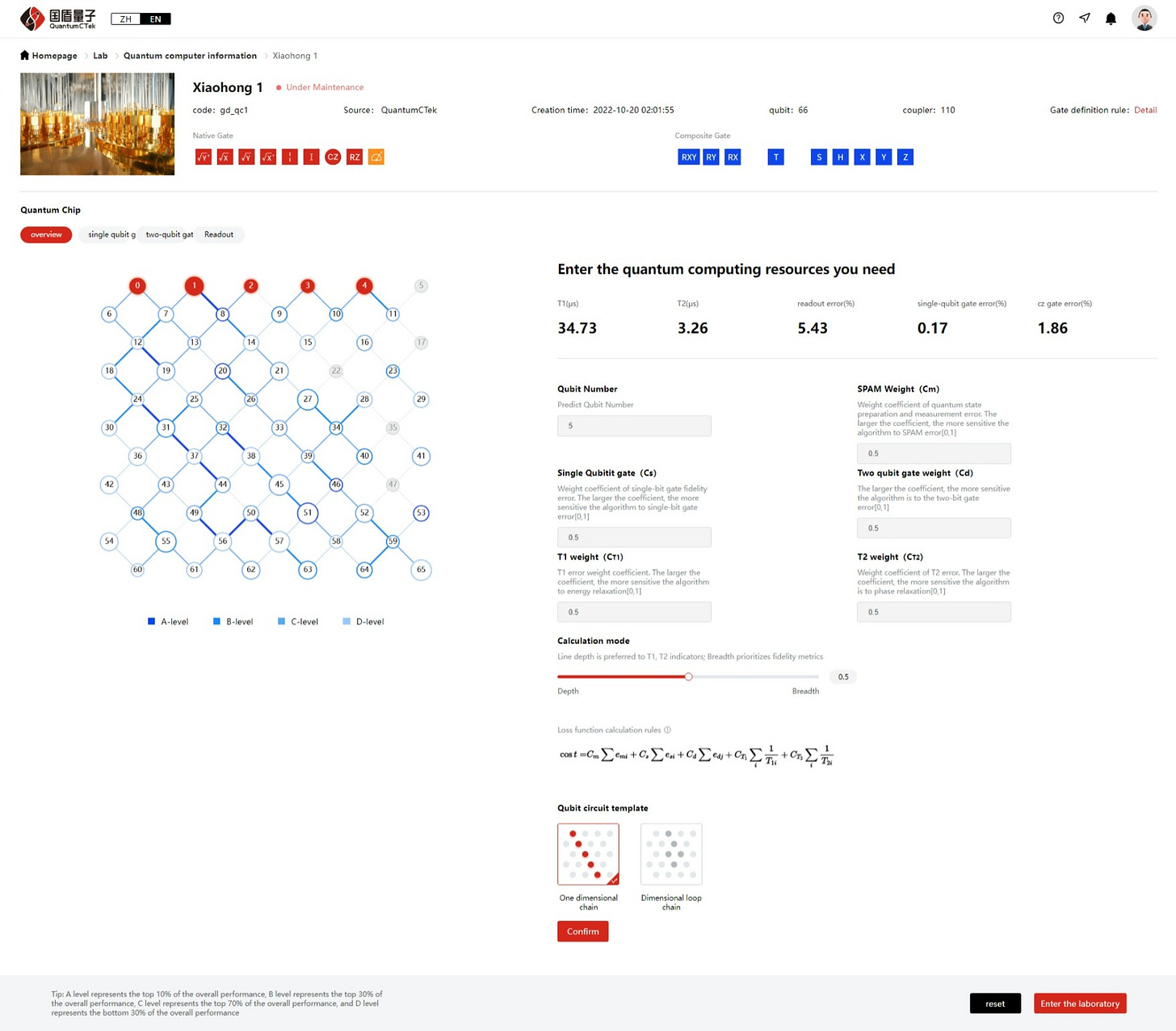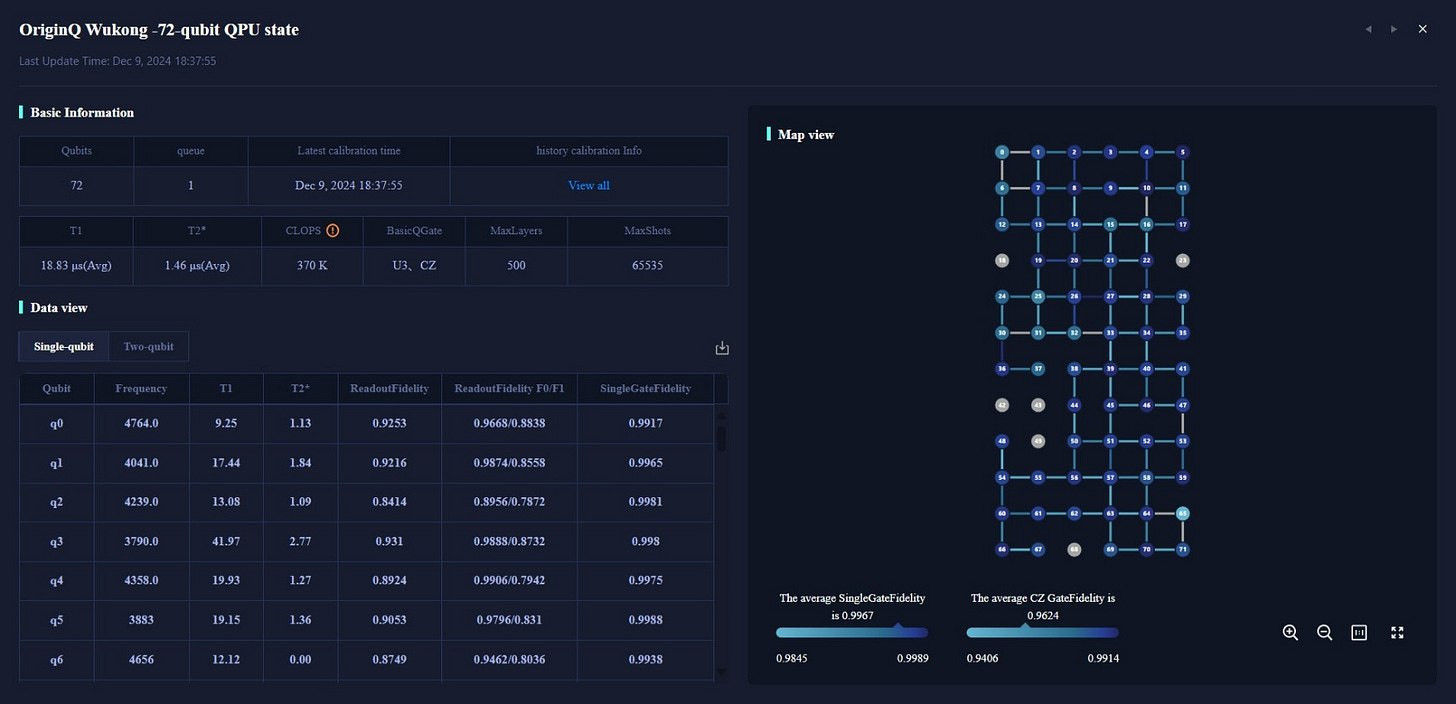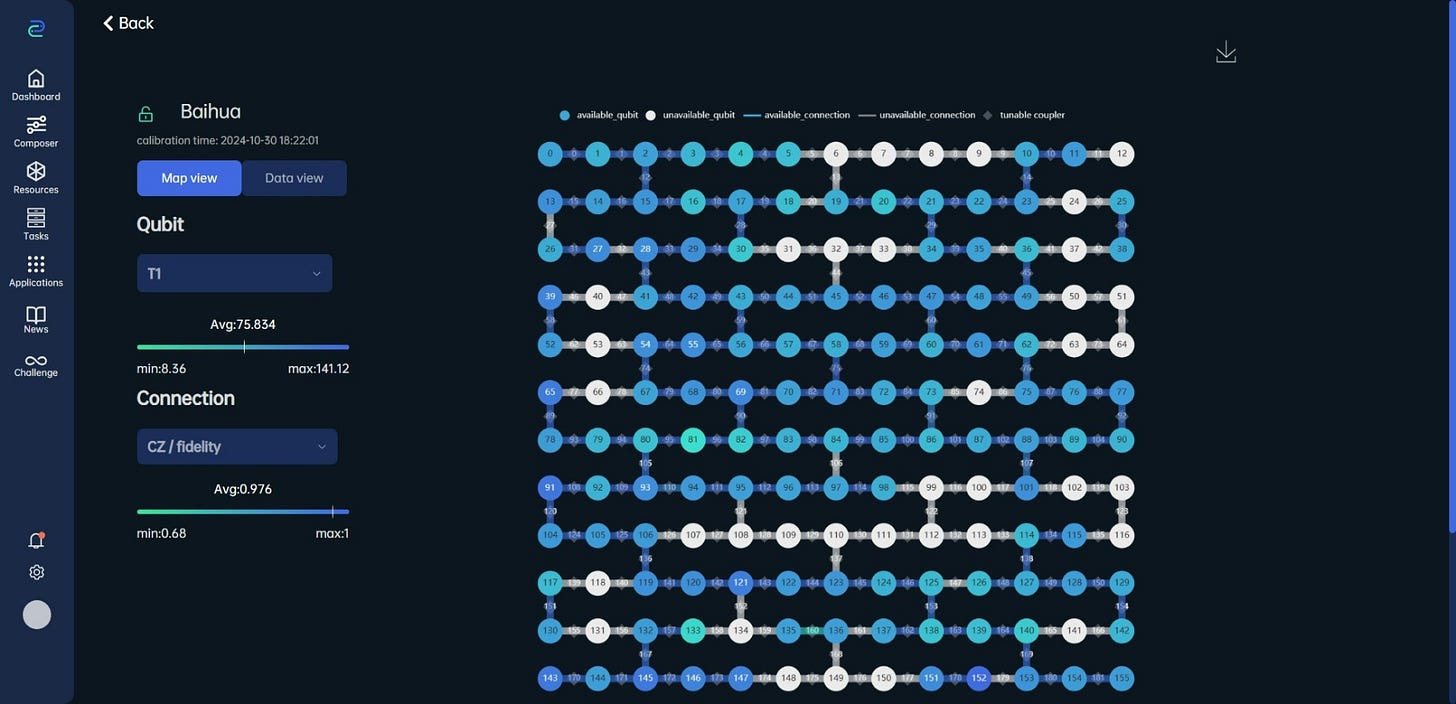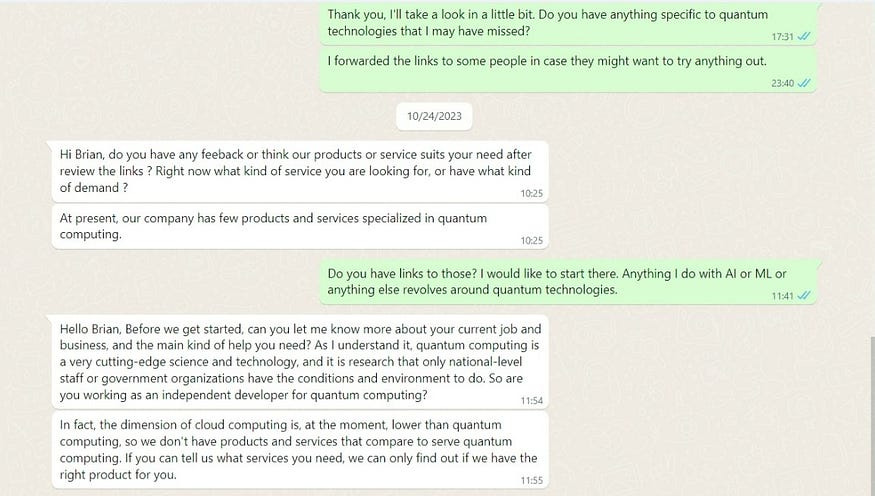UPDATED: China's Quantum Computers
Here's what's we actually know.
This article has been superseded by “China's Mightiest Quantum Computers,” which was published on February 12, 2025.
Every now and then, we get an English language announcement out of China, and everyone shares it all around. Not me. I hunt their quantum computers down. I try to access them. And I try to use them.
Often times, I’ll hunt down the organizations named in a news release and not find anything. Notwithstanding there’s a language barrier, I translate the pages to English and see no evidence of quantum computers, quantum computer research, or any corroborating evidence whatsoever.
Sometimes I can actually find something, but it’s always disappointing. The announcement said it is great, but it’s not. It’s definitely better than IBM’s or Google’s, except that it isn’t. Don’t believe me? Keep reading, zoom in on the screenshots, and you decide.
Like everywhere else, the availability of quantum computers changes over time. Here’s what’s publicly available as of December 2024:
QuantumCTek Xiaohong 1
This is the chip or chip series currently in the news. There’s supposedly a “Tianyan-504” superconducting quantum computer out there with a 504-qubit “Xiaohong” chip, but it’s not listed in the portal. I haven’t seen any article specify a generation of this chip; they just say “Xiaohong.” Well, the image above is Xiaohong 1, and it has only 66 qubits. They’re not all connected, and they are qualitatively unimpressive. If there is a newer Xiaohong chip with 504 qubits, there’s no reason to assume it’s qualitatively any better, nor is there any mention in any article I’ve seen of anyone claiming it’s any better.
OriginQ Wukong
Wukong has enjoyed a couple of news cycles. To Origin Quantum’s credit, the connectivity used to look a lot worse… if you can believe that. But if you thought the T1 and T2 numbers were low on Xiaohong, check out the numbers on Wukong. Also, you may have seen claims that Wukong is being used by researchers around the world blah, blah, blah. For the record, I’m in the same time zone as China, and I took this screenshot on a workday during work hours.
SpinQ SQC
SpinQ has less information available than QuantumCTek and Origin Quantum. The only topology I can find is of the 8-qubit online device, which is linear. In other words, qubit0 and qubit7 each connect to only one other qubit, while qubit1 through qubit6 each connect to exactly two qubits. The qubit count is the lowest, and the average T1 is lower than Xiaohong’s. In case you’re wondering: yes, I’m intentionally ignoring the NMR devices.
BAQIS Baihua, Dongling, Haituo, and ScQ-P21
BAQIS currently has five systems available, although one has only two qubits and a mostly blank screen. As you can see, their favorite topology is “broken.” All those white circles and white lines are unavailable qubits and connections, respectively. The numbers don’t lend themselves well to screenshots, but if you really want to know more, you might still be able to create an account. If you can’t, let me know what you’d like to know, and I’ll grab that information for you.
Baidu Qian Shi
Baidu used to have a publicly available device called Qian Shi. Its specs were 31.0 µs T1, 8.7 µs T2, 99.8% single-qubit gate fidelity, 96.4% CX fidelity, and 96.8% CZ fidelity. Maybe they have something now and maybe they don’t. Your guess is as good as mine.
UPDATE! Baidu was reportedly going to send what it had to BAQIS, but we can see above what BAQIS currently has.
UPDATE! Alibaba
I read a few years back that Alibaba had a quantum computer, so I created a cloud account and searched for it. Nothing. So, I asked about it. Nothing. Then came the news claiming that Alibaba was getting out of quantum and sending the tech to Academia. But if they had nothing, what was sent? Let the record show that Zhejiang University, the supposed recipient of Alibaba tech, shows no evidence of having an 11-qubit superconducting quantum computer, which is what Alibaba allegedly had, or any other quantum computer, for that matter. This link might require a Medium account.
UPDATE! USTC Jiuzhang
I searched for Jiuzhang back when the “supremacy” claim was made and couldn’t find it. I recently searched again, in English and Chinese, and didn’t fare much better: one web page. In contrast, even with Borealis long gone, Xanadu still features it front and center on its home page.
UPDATE! USTC Zuchongzhi 3.0
I looked up every organization listed in “Establishing a New Benchmark in Quantum Computational Advantage with 105-qubit,” and not one of them mentions Zuchongzhi 3.0, not even USTC, either in original English or translated from Chinese. One of the contributors, however, is from QuantumCTek, home of Xiaohong 1, which is at the top of this article. We are meant to believe that Xiaohong and Zuchongzhi have record-breaking new chips, and yet Xiaohong 1 is the steppingstone from which we’re supposed to make a leap of faith. Personally, I’m not jumping.
Conclusion
Here’s an interesting thought experiment: if you held me at gunpoint and forced me to use one of China's systems for a project, which would I choose? Psychologically, the smaller devices look less broken than the larger devices, so I’m inclined to choose one of those. BAQIS’ 11-qubit ScQ-P21 has two unavailable connections, so that means I’d probably choose SpinQ’s unnamed 8-qubit device. But since you and I are great pals and you wouldn’t do that, it ought to be telling that I’ve had free access to all these systems, plus earlier systems, and I’ve never had justification to use them for anything other than writing articles besmirching them.
For the record, all four devices on SpinQ Cloud are unavailable for maintenance as I type this. If we followed this thought experiment through, I’d probably just play eenie meenie minie moe with the others.
Image generated by an AI model provided by Microsoft Copilot.













